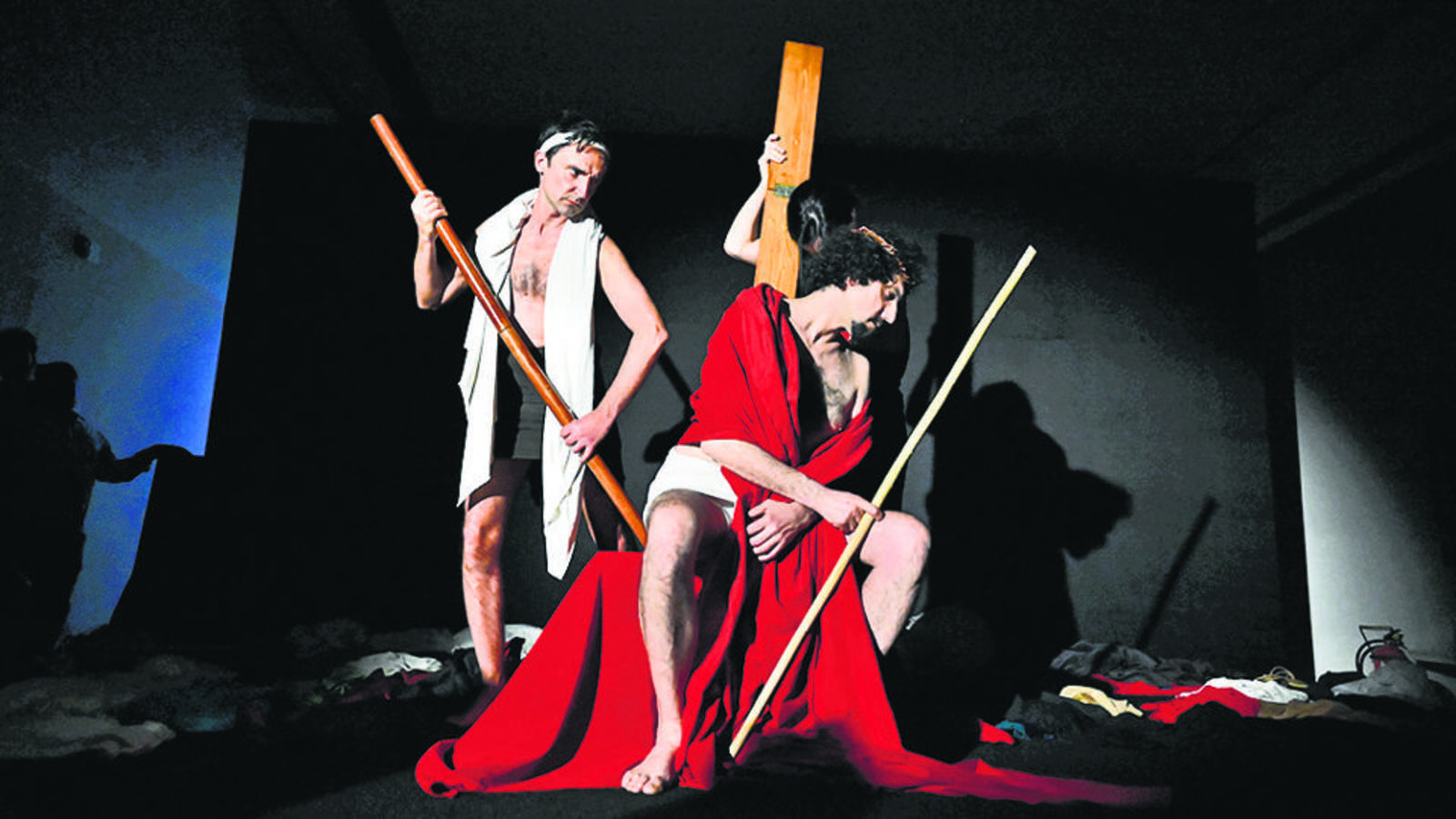The dimly lit stage at the Kiran Nadar Museum of Art (KNMA) in Saket came alive on Monday evening as performance artists from the Italian theatre group Teatri 35 recreated the dramatic energy of Caravaggio’s paintings using the tableau vivant technique — a French phrase meaning “living picture” that merges theatrical performance with fine art.

Presented as a prelude to KNMA’s upcoming exhibition on Caravaggio, the performance titled Tableaux Vivants Per Grazia Ricevuta offered a mesmerising display of silence, movement, and light. The exhibition, which opens on April 18 and runs through May 18, will feature some of the Italian master’s most celebrated works.
With the stage lit by a single spotlight, the performers moved swiftly and silently, assembling themselves into carefully crafted poses that mirrored Caravaggio’s masterpieces — momentary stillness transforming human forms into sculptural compositions, awash in chiaroscuro. Each composition dissolved almost as soon as it was formed, giving way to another, evoking both reverence and awe.
“Reaching the final image is not the goal,” the theatre group said in a statement. The actor’s body becomes a tool — as functional as a basket or a piece of fabric — with gestures that are deliberate, rhythmic, and mechanically precise. The greater the physical effort, the deeper the state of focus. It is like entering a trance. Nothing is left to chance, and nothing is unnecessary.”
The performance, he added, is the product of years of experimentation and exploration in which the actor’s body is central. “Caravaggio, for Teatri 35, was a providential encounter — a way to recover theatricality. His paintings, with their light and shadow, reveal without showing, refer without flaunting.”
The tableau vivant technique is a centuries-old performance tradition in which actors pose motionlessly to re-create well-known paintings. In this case, Caravaggio’s emotionally charged works were translated into live, breathing compositions on stage.
The company’s artistic core, based in Naples, has worked together for over 20 years in the realm of experimental theatre. Their process involves extensive research, combining classical music with historic visual art traditions to create a contemporary reinterpretation of iconic imagery.
“The company’s stylistic approach brings together music, body movement, and an ancient performative art — tableaux vivants — to form a new kind of dynamic representation,” the organiser explained. “Each piece begins with a long phase of listening, observing, and selecting. Music, in particular, is essential to achieving the right atmosphere and timing.”
Among the Caravaggio works brought to life on stage were Canestro di Frutta (Fruit Basket), Decollazione del Battista (Beheading of the Baptist), San Matteo e l’Angelo (Saint Matthew and the Angel), and Resurrezione di Lazzaro (Resurrection of Lazarus), each staged with remarkable attention to composition and gesture. The performances invited the audience to not only witness art but inhabit it — to feel its stillness, its strain, its intensity.
Michelangelo Merisi da Caravaggio (1571–1610), a pioneer of Baroque art, is celebrated for his revolutionary use of light and shadow and his raw, emotive depictions of religious and mythological scenes. His influence remains profound across visual arts, photography, cinema, and theatre.
The upcoming KNMA exhibition, said museum officials, is part of a larger showcase dedicated to Caravaggio’s enduring legacy. In addition to the artworks on display, the museum will host documentary screenings and offer a virtual reality experience designed to immerse visitors in the artist’s world. “This exhibition is not just about viewing art,” a KNMA official said. “It’s about experiencing it — intellectually, emotionally, and physically. And tonight’s performance beautifully sets the tone for what’s to come.”











Leave a Reply